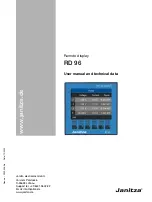
5
ICE EX04-18 Heat I&O Manual 06/2020 Rev.1
1.3 Features
•
High reliability
•
Intelligent control
•
Frequency regulated and energy-saving.
•
Dry contact and RS485 intelligent communication interface
1.4 Standards
Standard
Description
IEC61000-4
Electromagnetic Compatibility
IEC335-1
Safety of household appliances or similar electric appliance
GB4798.1
Environmental conditions existing in the application of electric
and electronic product – Storage
GB4798.2
Environmental conditions existing in the application of electric
and electronic product – Transportation
GB4798.3
Environmental conditions existing in the application of electric
and electronic product – Use
CE
Third-party certification
Table 1. Applicable standards of products
Chapter 2: Installation & Operation
2.1 Unpacking and Inspection
All of the EX series heat exchangers are carefully packaged for shipping and storage.
Unpack the carton and remove the unit from the shipping materials. Check the packing
list to ensure all parts and components are present.
Note:
1. Please check for any damage to the packaging and units; if any is present, make a
note and inform Industrial Climate Engineering together with the bar code number
on the package within 7 days.
2. If the product will not be immediately installed or is to be forwarded to its final
destination, re-pack the unit and store it in a safe place.
3. As an environment concern, we recommend that all shipping cartons be recycled.
2.2 Preparation Before Installing
The cabinet should have filters for the external loop to prevent the dust from entering the
heat exchanger.
The external loop’s suction and discharging opening should be isolated. If the suction and
discharging air is short circuited, heat dissipation capability will reduced significantly.
The opening area of the cabinet should be at least 1.5 times of the heat exchanger’s inlet
and outlet opening area and directed toward the heat exchanger’s opening.
During normal operation, the heat exchanger’s external loop will draw in small amounts of
water. This water can be discharged from the heat exchanger by a drainage pipe. If the heat
exchanger is mounted inside the cabinet, the drainage pipe should be designed carefully,
and the pipe should not be twisted. And when the pipe is exposed to ambient lower than
32ºF (0ºC), care should be taken to prevent the pipe from freezing.































